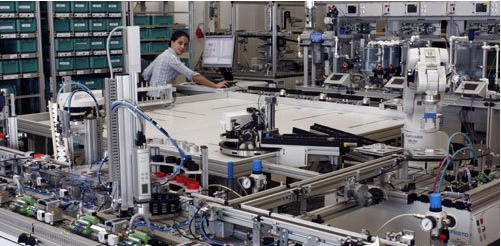Industrial Automation Platform achieves PLC to stay alive(1)
The future will continue to reduce the size of the PLC hardware development will also bring new features and functionality PLC. Software and enhance communications capabilities, PLC will give a new name to this long-standing position - Industrial automation platform.
If you are already using or are considering using the PLC, you may think that there have been nearly 50 years of technology is very mature, and there is little space to innovate; however, we all know, as with other consumer electronics products never stopped improvements like faster, smaller and lower prices make people full of hope.
From the beginning, when PLC relays replacement and began mass-timer for the future development trend of PLC's, on the continuing existence of an automatic control system to reduce the size and simplify support and maintenance of the driving force. In the past few years, the relay is replaced Rack structure based on smaller or less have the remote I / O port of the PLC.
From a software standpoint, the ladder language originally based relays and timers analog automatic system, has become the most widely used PLC programming languages; however, other options are slowly emerging, such as IEC61331-3 programming language. In the future, PLC will continue to progress in the areas of hardware, software and communications to adapt to the development of science and technology. Possible evolution will include consolidation PLC and programmable automation controllers (PAC) some functions to achieve from the factory floor to the top of the newsletter.

Smaller, faster, better
The
continuous development of the electronics industry, so today's
processors, circuit boards and components size kept shrinking, the role
of these technologies in slowly PLC, to make it more stable, reliable
and robust, and brought further enhance the features, such as faster processors, memory capacity can be expanded and new features communication mechanism.
In response to market demand, many of the features and functions are migrated from high-end to low-end PLC. For example, we can expect future small PLC will have more high-end
PLC characteristics, and high-end PLC will also provide a smaller, more
compact solutions to meet customer needs.
Meanwhile, PLC also due to reduced memory cost and size benefit. These
advantages greatly enhance localized data storage capabilities,
allowing the PLC with the need for expensive data before crawling system
applications. It also brings the possibility of the realization of other functions,
such as on-board storage of product information, so as to exclude to
accelerate failure.
PLC
also benefited from today's USB technology, making networking,
programming and monitoring of the control system has never been easier. With
continued advances in USB technology, as well as smaller mini-USB
connector appears, you can expect to see on more small PLC this
communication option.
Another
example is the fast-changing consumer electronics world rapidly
penetrate into industrial markets nonvolatile portable storage devices. By providing plenty of additional storage space in a small package inside, they brought a very big advantage to the user PLC. The possible options include USB device, SD card, miniSD and MicroSD
cards, so as to end users, machine manufacturers and system integrators
to increase up to 32GB of additional storage space.
Integration of PLC and PAC
Many
industrial controller vendors are still in the similarities and
differences between the PAC and the PLC as a selling point, but the
future of automation engineers to consider their system, you may not
care about in the end is what kind of names, they will focus on the
performance and practical features. Like the definition and characteristics of the two devices is evolving like, convergence PLC and PAC will be to one another.
Based on this evolution in the low-end and high-end market, there will be plenty of opportunities. With the advances in hardware technology, advanced features will enter the low-end processors. This will in turn promote the vendor will integrate more functionality and choice of high-end products.
High-speed
processor and more storage space will promote the application of
advanced features, such as collaborative support motion control, vision
system integration and a variety of communication protocols. Of course, PLC will still maintain its simple features to attract more users.
During the PAC and PLC merging, we can see both the product itself continuously improve and progress. PAC can allow users in the industrial automation field to expand the
traditional sense, encouraging suppliers to develop new products to meet
customer demand.
These
demands challenge the product designers: forcing them to find a new
direction, such as support for existing components to build a new system
to meet the harsh industrial environments. Future
challenges will include the provision of connectivity, memory expansion
capabilities, and can enhance the processing power controller to
respond to increasingly complex applications, but also required to
maintain or even reduce the cost of the final product.



